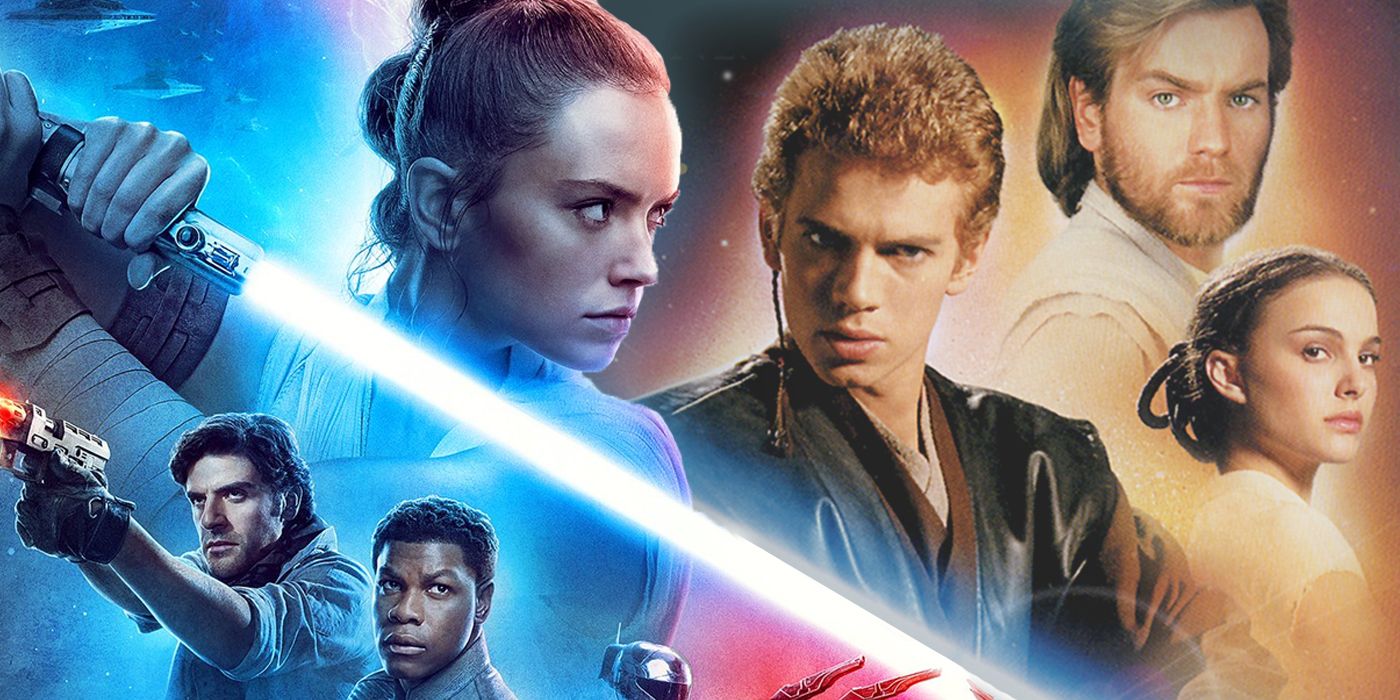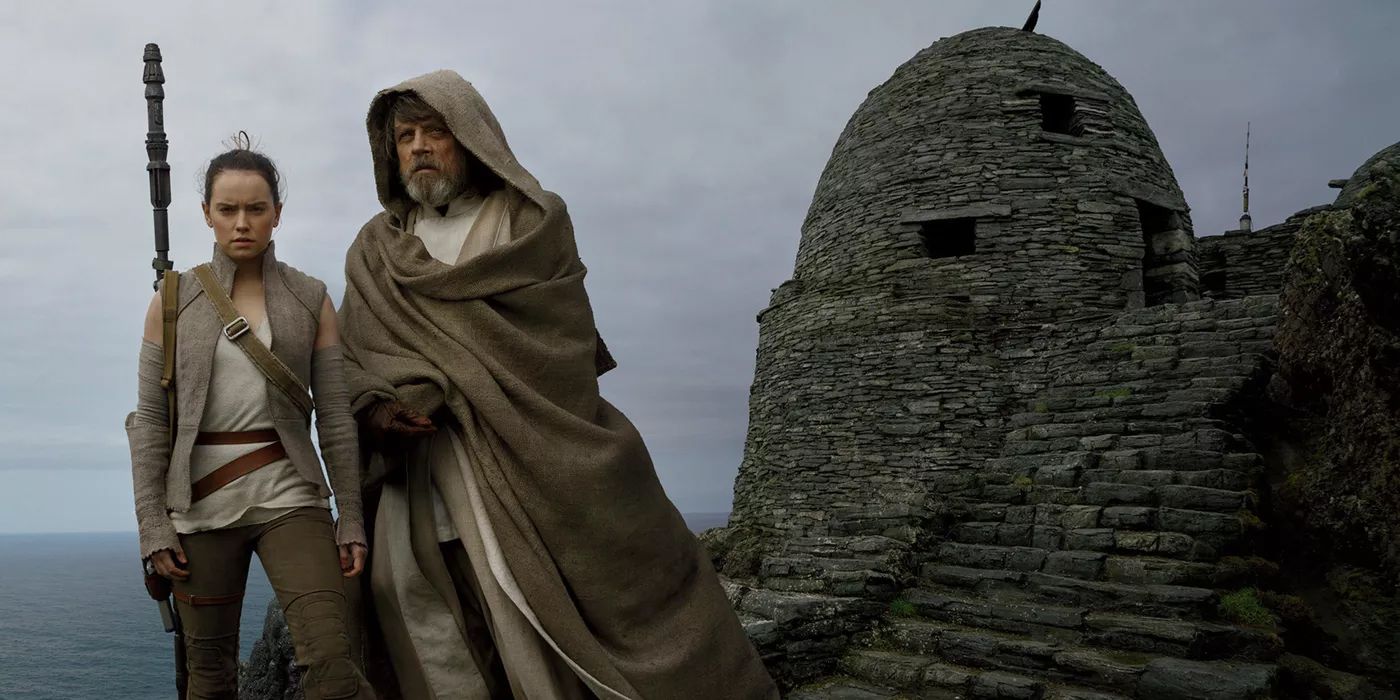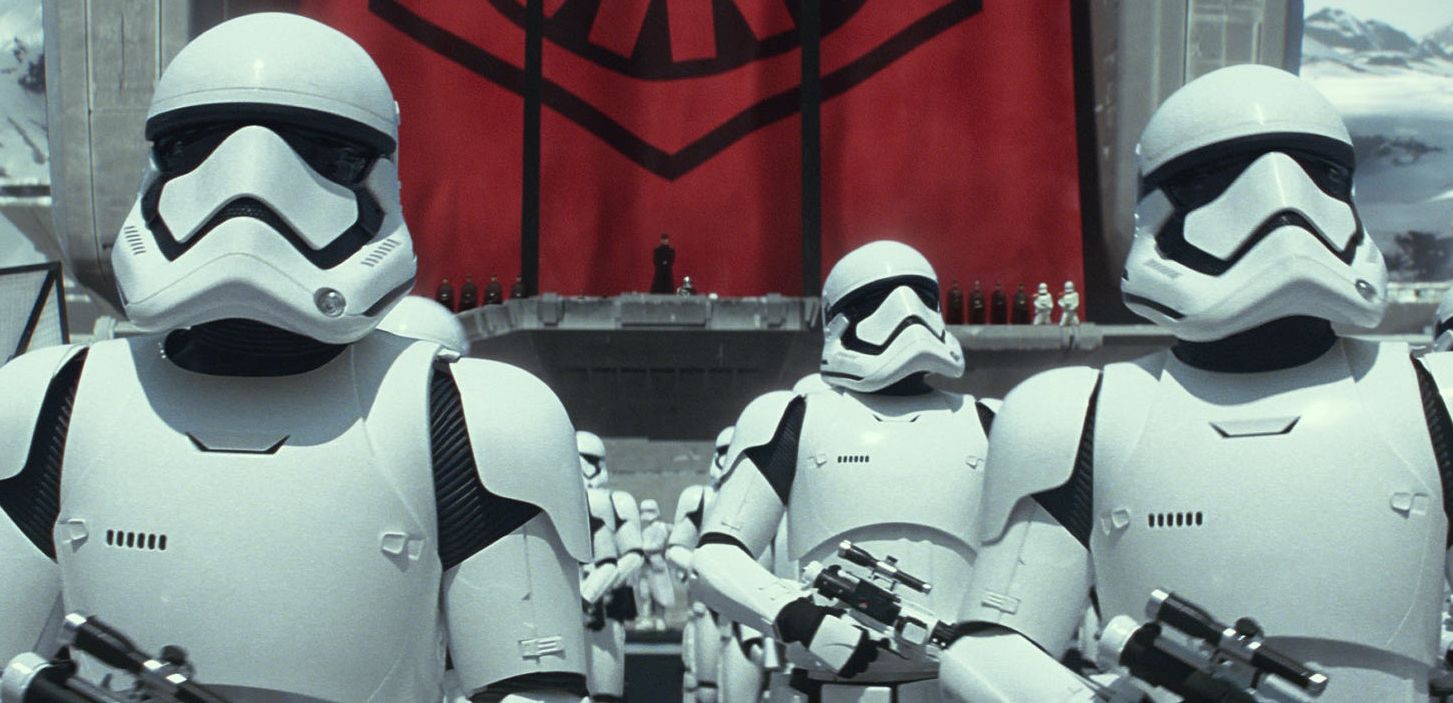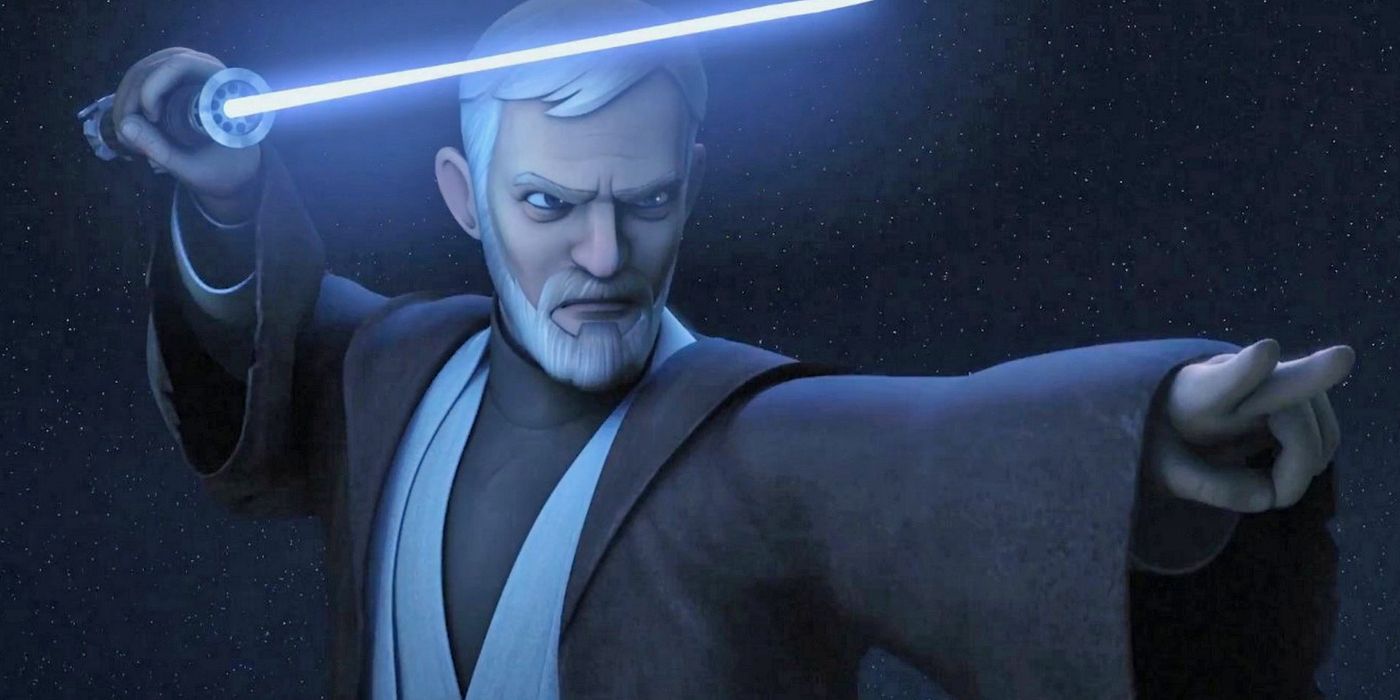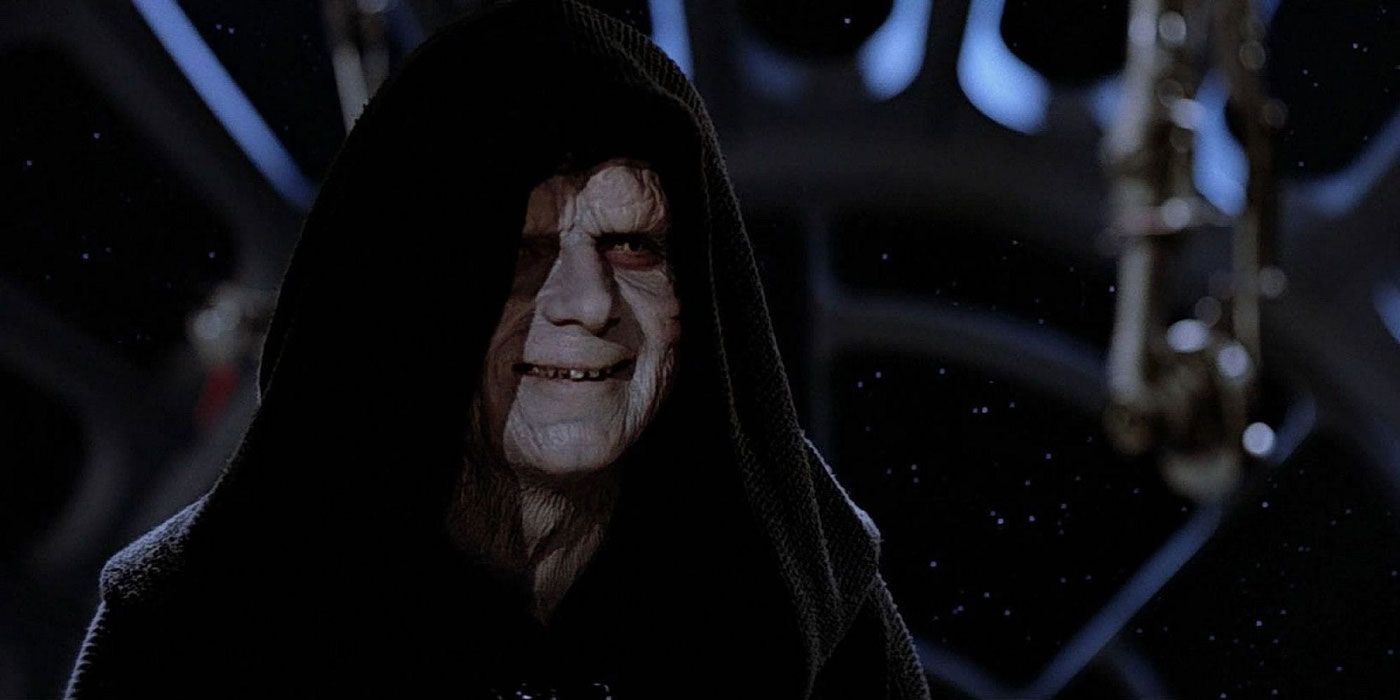More than any other ongoing pop-culture juggernaut, Star Wars seems to be a lightning rod for constant controversy. At a time when the most seemingly benign statements can draw the ire of one set of fans or another, there's plenty of debate about what is objectively good and bad about the franchise, even though those discussions often fail to account for personal taste. And in all of Star Wars fandom, perhaps no topic is more widely debated than the relative merits of the Prequel trilogy that began with Star Wars: The Phantom Menace and the sequel trilogy that's about to conclude with Star Wars: The Rise of Skywalker.
Now, we're going to take a closer look at both of these sagas to see which one brought more into the overall Star Wars canon. While both sets of films are very much in the shadow of the original trilogy, they both took different approaches to building on the foundation that those first films established. While the prequels introduced fans to a more civilized era where the Jedi Order reigned, the sequel trilogy carries on by exploring new worlds in the shadow of the hollowness of the heroic victory in the original trilogy.
A World of Names vs. a World of People
The prequels and sequels have very different approaches to storytelling that leave the audience feeling drastically different at the end of each film. The prequels tell the stories of a world, but the sequels are about individuals living in a world. This leaves both trilogies with undeniable weaknesses that ultimately either oen from standing entirely on its own merits.
The prequels focus on the world of the Jedi Council and the Republic Senate. Those films about how their decisions affect huge-scale events that are much larger than any individual characters in the story. While they feature massive casts of characters amd depict multiple fronts of a galactic war between armies, most of those characters are completely alien to all but the most hardcore Star Wars buffs. For the most part, the core characters who stand out in the prequels are those who already existed in the original trilogy like Obi-Wan, Anakin Skywalker and Yoda.
While it has far fewer characters, the sequel trilogy avoids introducing characters unless they have a direct impact on the narrative itself. The films introduce fewer new people or locations, but those locations and people matter more to the audience. By showing the world through the eyes of a select few characters rather than attempting to capture the entire world at once, it gives audiences an easier on-ramp to feeling like part of that world.
The roles of the planets Ahch-To in the sequels and Geonosis in the prequels capture this idea perfectly. Ahch-To, the home of the First Jedi Temple, feels more fleshed-out by the time The Last Jedi ends than Geonosis, even though Attack of the Clones spends more time on Geonosis than The Last Jedi spends on Ahch-To. This is because viewers see the world through Rey and Luke as they explore the mysteries and enigmas of that ancient world. On the other hand, Geonosis is just a location where everyone just stays. We don't see the world; we just see what happens there. Ultimately, the sequels make Ahch-To feel like a place, where the prequels are content to treat Geonosis like a name.
World Building vs Character Development
While the sequels focus so much on their characters and what they experience, they don't spend a great deal of time with world-building. Central ideas like the New Republic and the First Order are glossed over in the films, and their details are only revealed by ancillary tie-in materials. The average Star Wars movie-watcher may have no idea how the Resistance or First Order formed or why the Republic does nothing about the First Order. Those blanks aren't hard to fill-in, but it puts an undue burden on viewers.
However, the prequels have the opposite problem. From every Senate meeting to Jedi training and the scientific explanation of the Force, the prequels seem more interested in procedural details than many of their characters. While this makes for a weaker narrative, this makes them a stronger source for lore, which was harvested to great effect by projects like Star Wars: The Clone Wars.
This ultimately leads to the big issue: the sequels prioritize characters over world. We see the hopes, aspirations, and struggles of Rey, Finn, Poe and Kylo Ren as those characters carry the narrative. For general audiences, characters are more memorable than a bland history lesson. The prequels introduced great deals of history and text, but the sequels introduced better characters.
New Stories vs. More Complex, Old Stories
Naturally, the prequels opened up a far bigger world to development, due to how many new stories could be told about all those new characters introduced. The Clone Wars animated series took every element of the prequel trilogy and used them all to paint a far more nuanced, complex world of political strife than the films themselves. The addition of Ahsoka, in particular, is a huge contribution to Star Wars lore that the films never touched upon.
The sequel trilogy, by comparison, didn't add too much that was new, but they developed on already existing stories. In the erar that surrounded the sequels, projects like Star Wars: Rebels just built upon what audiences already knew and further elaborated on those ideas. The same could be said for live-action productions like Rogue One, Solo and The Mandalorian. Everything in these productions draws on what came before, but they do so in a way that enriches what people already liked.
These different approaches, though, create an interesting enigma. It's undeniable that the sequels offered a more intimate snapshot of the galaxy, but they didn't bring a wealth of new ideas to the table. However, the prequels offer a foundation to a new era, while the sequel just builds upon what came before to show what happened next.
The Unspoken Factors
As of this writing, Star Wars: The Rise of Skywalker has yet to be released. However, it seems safe to assume that it will live up to its billing as the conclusion to the Skywalker Saga. In all likelihood, it will elaborate on more Force Powers, and we may learn the extended plans of Darth Sidious/Emperor Palpatine that tie the three trilogies together.
Even with those unknowns, it's clear that the sequel trilogy ultimately contributed less to Star Wars lore than the prequels in terms of quantity. The prequels bombard the audience with lore and information in occasionally heavy-handed detail at the expense of its characters. Watching the Senate's politics offers world-building without emotional attachment, the same way a textbook might offer you a factual understanding of the history of the Roman Empire without leaving any meaningful impression.
The prequels have brought more facts to Star Wars lore but didn't develop those ideas fully in the films proper. We see the Jedi Council in the prequels as this glorious institution that, continuously, makes questionable decisions, but the only people to question the Jedi Council's actions are villains. However, the sequel trilogy answers this idea by explicitly criticizing the Jedi for their morally ambiguous actions, with the most explicit case of this being The Last Jedi. While the sequel trilogy enriches what came before, the prequels ultimately brought more by creating a sturdy foundation to build upon.

